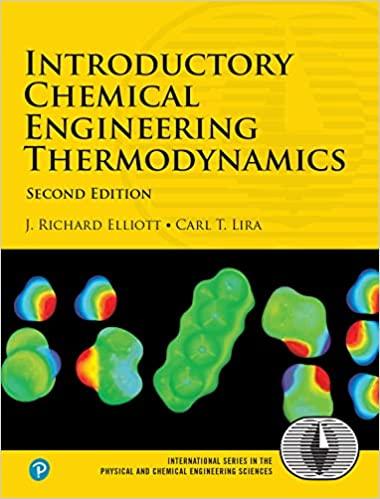Question
In a simple chemical reaction, there are two elementary reaction steps. AB B+BC The first reaction is in equilibrium with forward rate constant k +
In a simple chemical reaction, there are two elementary reaction steps. AB B+BC
The first reaction is in equilibrium with forward rate constant k+ and backward rate constant k- and the second reaction is irreversible with rate constant k2.
(a) Write a set of differential equations governing the rate of conversion of A to C. How does the system behave:
- In the limit where the first reaction step is rate-limiting? - When the second step is rate-limiting?
Solve the differential equations in both limits. Which of these limiting cases would make the steady-state assumption of the intermediate (component B) valid?
(b) In the reaction above, let k+ = k- 1/s and let k2=5 mol-1 min-1. In a closed system initially containing only 2M of the A component, plot the concentrations of all three components as a function time using your result from (a). How long does it take to reach 99% conversion from A to C?
(c)Instead of the initial conditions in (b) let the initial solution contain only 2M of the B component. Plot the time evolution of the concentrations of all three components in this case.
(d) Bonus: Calculate the evolution of A, B, and C by numerically integrating the coupled differential equations you obtained in (a) using the same initial condition and parameters as in (b). Plot the concentrations of the three components and compare them with the result you obtained in (b). Does your numerical results agree with your analytical result? Explain why it does or does not agree.
dX(t)/dt=kY(t)
X(t) and Y(t) change with time t and k are constant. This equation can be integrated numerically by applying Euler scheme:
X(t+dt)=X(t)+dt k Y(t).
Step by Step Solution
There are 3 Steps involved in it
Step: 1

Get Instant Access to Expert-Tailored Solutions
See step-by-step solutions with expert insights and AI powered tools for academic success
Step: 2

Step: 3

Ace Your Homework with AI
Get the answers you need in no time with our AI-driven, step-by-step assistance
Get Started


